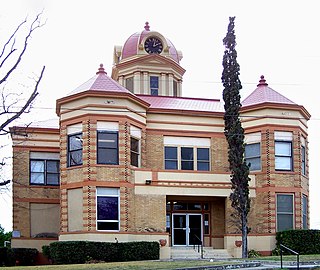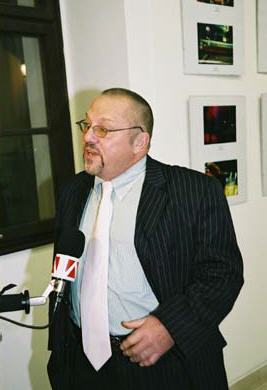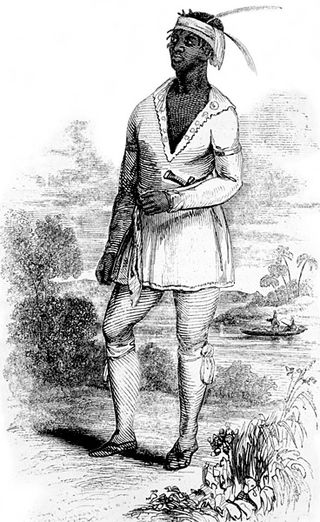
Brackettville is a city in Kinney County, Texas, United States. The population was 1,341 at the 2020 census, down from 1,688 at the 2010 census. It is the county seat of Kinney County.

The term Five Civilized Tribes was applied by the United States government in the early federal period of the history of the United States to the five major Native American nations in the Southeast: the Cherokee, Chickasaw, Choctaw, Muscogee (Creek), and Seminoles. White Americans classified them as "civilized" because they had adopted attributes of the Anglo-American culture.
Conventionally, the descriptor 'civilized' is seldom utilized nowadays due to its derogatory nature, and the historical usage of the term as an obscuration for cultural imperialism. Therewith, the grouping of these aforementioned nations is referred to as The Five Tribes or simply Five Tribes.

The Seminole are a Native American people who developed in Florida in the 18th century. Today, they live in Oklahoma and Florida, and comprise three federally recognized tribes: the Seminole Nation of Oklahoma, the Seminole Tribe of Florida, and the Miccosukee Tribe of Indians of Florida, as well as independent groups. The Seminole people emerged in a process of ethnogenesis from various Native American groups who settled in Spanish Florida beginning in the early 1700s, most significantly northern Muscogee Creeks from what are now Georgia and Alabama.

Gullah is a creole language spoken by the Gullah people, an African-American population living in coastal regions of South Carolina and Georgia as well as extreme northeastern Florida and the extreme southeast of North Carolina.
Pin Point is an unincorporated community in Chatham County, Georgia, United States; it is located 11 miles (18 km) southeast of Savannah and is part of the Savannah Metropolitan Statistical Area. Pin Point is 1 mi (1.6 km) wide and 1.6 mi (2.6 km) long, and lies 13 feet above sea level. The town is best known for its longstanding Gullah-speaking community, and being the birth place of U.S. Supreme Court justice Clarence Thomas.

The Gullah are a subgroup of the African American ethnic group, who predominantly live in the Lowcountry region of the U.S. states of South Carolina, North Carolina, Georgia, and Florida within the coastal plain and the Sea Islands. Their language and culture have preserved a significant influence of Africanisms as a result of their historical geographic isolation and the community's relation to their shared history and identity.

Ian Francis Hancock is a linguist, Romani scholar and political advocate. He was born and raised in England and is one of the main contributors in the field of Romani studies.

The Black Seminoles, or Afro-Seminoles, are an ethnic group of mixed Native American and African origin associated with the Seminole people in Florida and Oklahoma. They are mostly blood descendants of the Seminole people, free Africans, and escaped former slaves, who allied with Seminole groups in Spanish Florida. Many have Seminole lineage, but due to the stigma of having mixed origin, they have all been categorized as slaves or freedmen in the past.
Black Indians are Native American people – defined as Native American due to being affiliated with Native American communities and being culturally Native American – who also have significant African American heritage.
An English-based creole language is a creole language for which English was the lexifier, meaning that at the time of its formation the vocabulary of English served as the basis for the majority of the creole's lexicon. Most English creoles were formed in British colonies, following the great expansion of British naval military power and trade in the 17th, 18th and 19th centuries. The main categories of English-based creoles are Atlantic and Pacific.
Bolek, also spelled as Boleck or Bolechs, and known as Bowlegs by European Americans, was a Seminole principal chief, of the Alachua chiefly line. He was the younger brother of King Payne, who succeeded their father Cowkeeper as leading or principal chief in Florida. Bolek succeeded King Payne in 1812 when he was killed.

Atlantic Creole is a cultural identifier of those with origins in the transatlantic settlement of the Americas via Europe and Africa.
There are two languages spoken by the Seminole tribe of the southeastern United States, both of the Muskogean language family:

John Horse, also known as Juan Caballo, Juan Cavallo, John Cowaya and Gopher John, was a man of mixed African and Seminole ancestry who fought alongside the Seminoles in the Second Seminole War in Florida. He rose to prominence in the third year of what was to become a seven-year war when the first generation of Black Seminole leaders was largely decimated and the primary Seminole war chief, Osceola, fell into the hands of the American military commander, General Thomas Sydney Jesup.

Joseph A. Opala, OR is an American historian noted for establishing the "Gullah Connection," the historical links between the indigenous people of the West African nation of Sierra Leone and the Gullah people of the Low Country region of South Carolina and Georgia in the United States.
Sierra Leonean Americans are an ethnic group of Americans of full or partial Sierra Leonean ancestry. This includes Sierra Leone Creoles whose ancestors were African American Black Loyalists freed after fighting on the side of the British during the American Revolutionary War. Some African Americans trace their roots to indigenous enslaved Sierra Leoneans exported to the United States between the 18th and early 19th century. In particular, the Gullah people of partial Sierra Leonean ancestry, fled their owners and settled in parts of South Carolina, Georgia, and the Sea Islands, where they still retain their cultural heritage. The first wave of Sierra Leoneans to the United States, after the slavery period, was after the Sierra Leone Civil War in the 1990s and early 2000s. According to the American Community Survey, there are 34,161 Sierra Leonean immigrants living in the United States.

African Americans in Florida or Black Floridians are residents of the state of Florida who are of African ancestry. As of the 2010 U.S. Census, African Americans were 16.6% of the state's population. The African-American presence in the peninsula extends as far back as the early 18th century, when African-American slaves escaped from slavery in Georgia into the swamps of the peninsula. Black slaves were brought to Florida by Spanish conquistadors.
The Mascogos are an Afro-descendant group in Coahuila, Mexico. Centered on the town of El Nacimiento in Múzquiz Municipality, the group are descendants of Black Seminoles escaping the threat of slavery in the United States.










